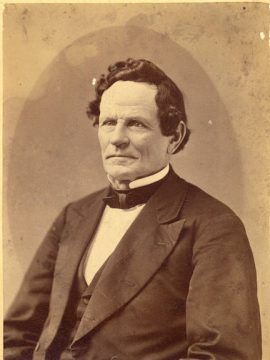David Labaree in Aeon:
 Occupants of the American meritocracy are accustomed to telling stirring stories about their lives. The standard one is a comforting tale about grit in the face of adversity – overcoming obstacles, honing skills, working hard – which then inevitably affords entry to the Promised Land. Once you have established yourself in the upper reaches of the occupational pyramid, this story of virtue rewarded rolls easily off the tongue. It makes you feel good (I got what I deserved) and it reassures others (the system really works). But you can also tell a different story, which is more about luck than pluck, and whose driving forces are less your own skill and motivation, and more the happy circumstances you emerged from and the accommodating structure you traversed. As an example, here I’ll tell my own story about my career negotiating the hierarchy in the highly stratified system of higher education in the United States. I ended up in a cushy job as a professor at Stanford University. How did I get there? I tell the story both ways: one about pluck, the other about luck. One has the advantage of making me more comfortable. The other has the advantage of being more true.
Occupants of the American meritocracy are accustomed to telling stirring stories about their lives. The standard one is a comforting tale about grit in the face of adversity – overcoming obstacles, honing skills, working hard – which then inevitably affords entry to the Promised Land. Once you have established yourself in the upper reaches of the occupational pyramid, this story of virtue rewarded rolls easily off the tongue. It makes you feel good (I got what I deserved) and it reassures others (the system really works). But you can also tell a different story, which is more about luck than pluck, and whose driving forces are less your own skill and motivation, and more the happy circumstances you emerged from and the accommodating structure you traversed. As an example, here I’ll tell my own story about my career negotiating the hierarchy in the highly stratified system of higher education in the United States. I ended up in a cushy job as a professor at Stanford University. How did I get there? I tell the story both ways: one about pluck, the other about luck. One has the advantage of making me more comfortable. The other has the advantage of being more true.
…The short story is that I’m in the family business. In the 1920s, my parents grew up as next-door neighbours on a university campus where their fathers were both professors. It was Lincoln University, a historically black institution in southeast Pennsylvania near the Mason-Dixon line. The students were black, the faculty white – most of the latter, like my grandfathers, were clergymen. The students were well-off financially, coming from the black bourgeoisie, whereas the highly educated faculty lived in the genteel poverty of university housing. It was a kind of cultural missionary setting, but more comfortable than the foreign missions. One grandfather had served as a missionary in Iran, where my father was born; that was hardship duty. But here was a place where upper-middle-class whites could do good and do well at the same time.
More here.
